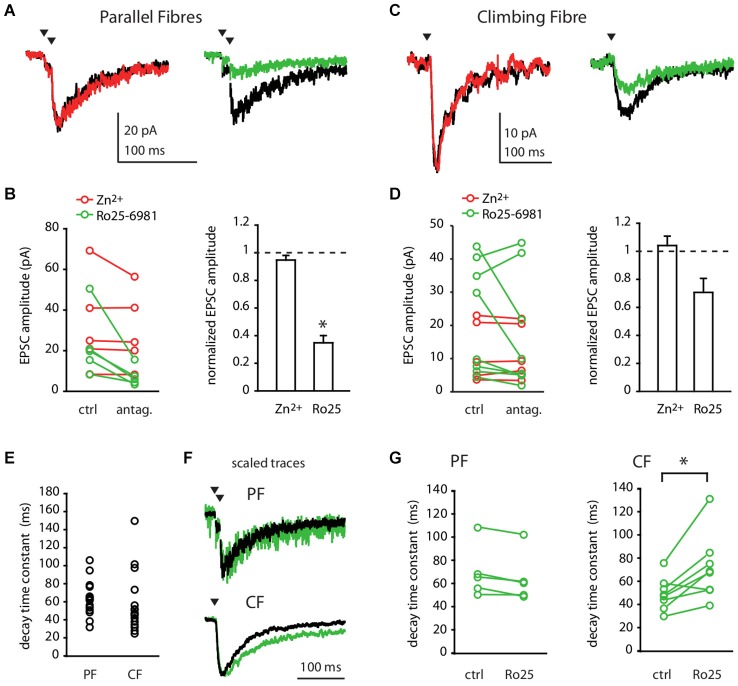Figure 1.
Parallel Fibre and Climbing Fibre inputs activate GluN2B-containing NMDA receptors in Molecular Layer interneurons. (A,B) PF- or (C,D) CF-evoked NMDA currents in MLIs in control conditions (black) or in the presence of 300 nM free Zn2+ (red) or 300 nM Ro25-6981 (green). (A,C) Representative recordings (average of 30–50 sweeps). (B,D) Left panels: NMDA EPSC amplitude before (ctrl) and after (antag.) bath application of Zn2+ (red) or Ro25-6981 (green) for each cell. Right panels: Mean normalized NMDA-EPSC amplitude after Zn2+ or Ro25-6981.*p < 0.05. (E) Decay time constants of PF- or CF-evoked NMDA EPSCs in control conditions. (F,G) Decay time constants of CF- but not of PF-evoked NMDA EPSCs are slowed by Ro25-6981. (F) Scaled traces of representative recordings (average of 30–50 sweeps) in control conditions (black) and after 300 nM Ro25-6981 (green). For PF input, same cell as in (A). For CF input, different cell from (C). (G) PF (left) and CF (right) -evoked NMDA EPSC decay time constant before and after bath application of Ro25-6981 for each cell. *p < 0.05.

